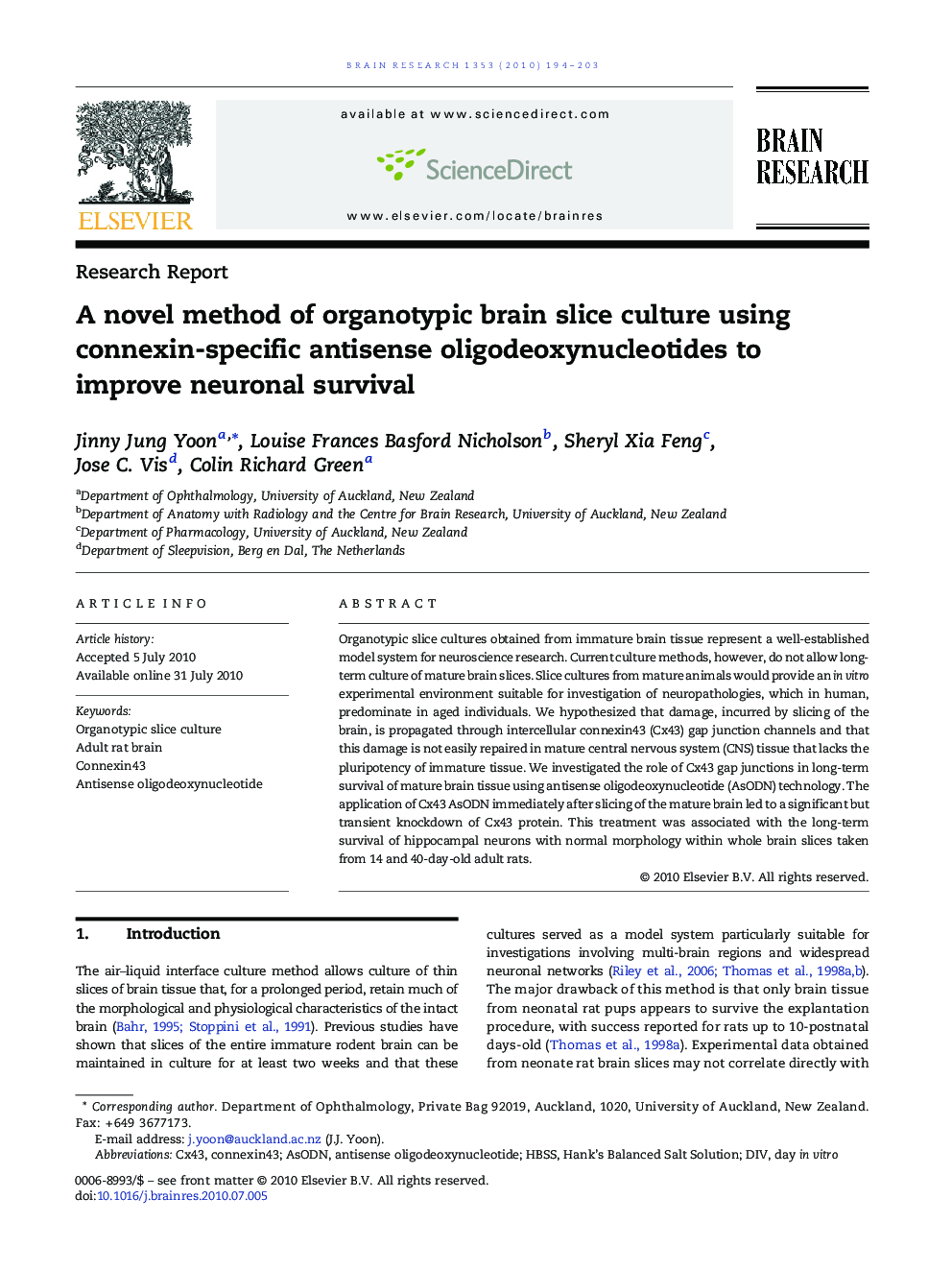| Article ID | Journal | Published Year | Pages | File Type |
|---|---|---|---|---|
| 4326529 | Brain Research | 2010 | 10 Pages |
Organotypic slice cultures obtained from immature brain tissue represent a well-established model system for neuroscience research. Current culture methods, however, do not allow long-term culture of mature brain slices. Slice cultures from mature animals would provide an in vitro experimental environment suitable for investigation of neuropathologies, which in human, predominate in aged individuals. We hypothesized that damage, incurred by slicing of the brain, is propagated through intercellular connexin43 (Cx43) gap junction channels and that this damage is not easily repaired in mature central nervous system (CNS) tissue that lacks the pluripotency of immature tissue. We investigated the role of Cx43 gap junctions in long-term survival of mature brain tissue using antisense oligodeoxynucleotide (AsODN) technology. The application of Cx43 AsODN immediately after slicing of the mature brain led to a significant but transient knockdown of Cx43 protein. This treatment was associated with the long-term survival of hippocampal neurons with normal morphology within whole brain slices taken from 14 and 40-day-old adult rats.
Research Highlights►Gap junction-mediate lesion spread occurs during organotypic slice culture preparation. ►Cx43 antisense oligodeoxynucleotide is used to knockdown Cx43 immediately after slicing. ►This treatment increases viability of brain slices obtained from mature rats.
